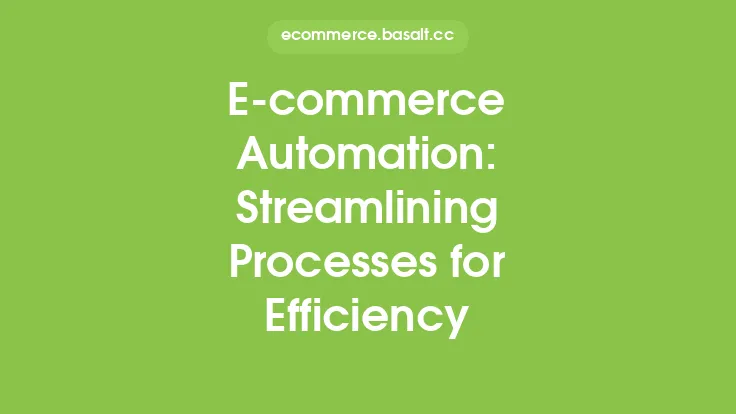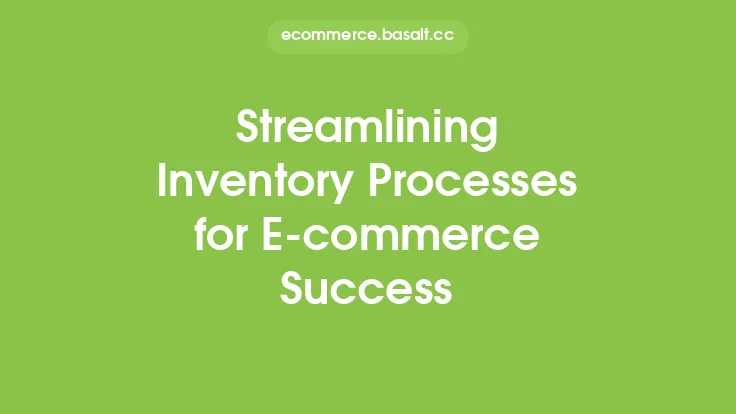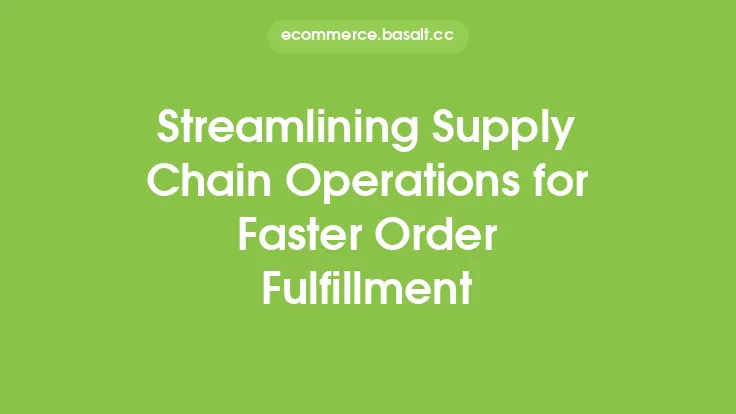In the world of e-commerce, efficiency is key to success. Streamlining store processes is essential for providing a seamless shopping experience, reducing costs, and increasing productivity. When store processes are inefficient, it can lead to frustrated customers, delayed orders, and lost sales. In this article, we will explore the importance of streamlining store processes and provide tips and strategies for achieving efficiency in store operations.
Understanding Store Processes
Store processes refer to the series of actions and tasks that occur within an e-commerce store, from receiving and processing orders to managing inventory and shipping products. These processes can be complex and involve multiple stakeholders, including store owners, employees, suppliers, and customers. To streamline store processes, it's essential to understand the current workflows and identify areas for improvement. This can be achieved by mapping out the current processes, identifying bottlenecks, and gathering feedback from employees and customers.
Identifying Inefficiencies
Inefficiencies in store processes can arise from various sources, including manual data entry, lack of automation, and inadequate communication. Some common inefficiencies include:
- Manual processing of orders and payments
- Inaccurate inventory management
- Insufficient communication between departments
- Lack of automation in repetitive tasks
- Inefficient use of resources, such as time and labor
To identify inefficiencies, store owners can conduct a thorough analysis of their current processes, gather feedback from employees and customers, and monitor key performance indicators (KPIs) such as order fulfillment rates, inventory turnover, and customer satisfaction.
Implementing Efficient Store Processes
Implementing efficient store processes requires a strategic approach. Here are some tips and strategies for streamlining store operations:
- Automate repetitive tasks, such as data entry and inventory management, using software and tools
- Implement a centralized management system to streamline communication and data sharing between departments
- Use analytics and reporting tools to monitor KPIs and identify areas for improvement
- Develop standard operating procedures (SOPs) for common tasks and processes
- Provide training and support to employees to ensure they have the skills and knowledge needed to perform their tasks efficiently
- Continuously monitor and evaluate store processes to identify areas for improvement and implement changes as needed
Leveraging Technology for Efficiency
Technology plays a crucial role in streamlining store processes. E-commerce platforms, inventory management software, and automation tools can help reduce manual labor, improve accuracy, and increase productivity. Some popular technologies for streamlining store processes include:
- E-commerce platforms, such as Shopify and Magento, that provide integrated management systems and automation tools
- Inventory management software, such as TradeGecko and Zoho Inventory, that help track and manage inventory levels
- Automation tools, such as Zapier and IFTTT, that automate repetitive tasks and workflows
- Analytics and reporting tools, such as Google Analytics and Mixpanel, that provide insights into store performance and customer behavior
Best Practices for Streamlining Store Processes
To ensure the success of streamlining store processes, store owners should follow best practices, including:
- Continuously monitoring and evaluating store processes to identify areas for improvement
- Providing training and support to employees to ensure they have the skills and knowledge needed to perform their tasks efficiently
- Encouraging open communication and feedback between departments and stakeholders
- Fostering a culture of continuous improvement and innovation
- Staying up-to-date with the latest technologies and trends in e-commerce and store operations
Conclusion
Streamlining store processes is essential for providing a seamless shopping experience, reducing costs, and increasing productivity. By understanding store processes, identifying inefficiencies, implementing efficient store processes, leveraging technology, and following best practices, store owners can achieve efficiency in store operations and drive business success. Remember, streamlining store processes is an ongoing process that requires continuous monitoring, evaluation, and improvement. By staying focused on efficiency and innovation, store owners can stay ahead of the competition and achieve long-term success in the world of e-commerce.





